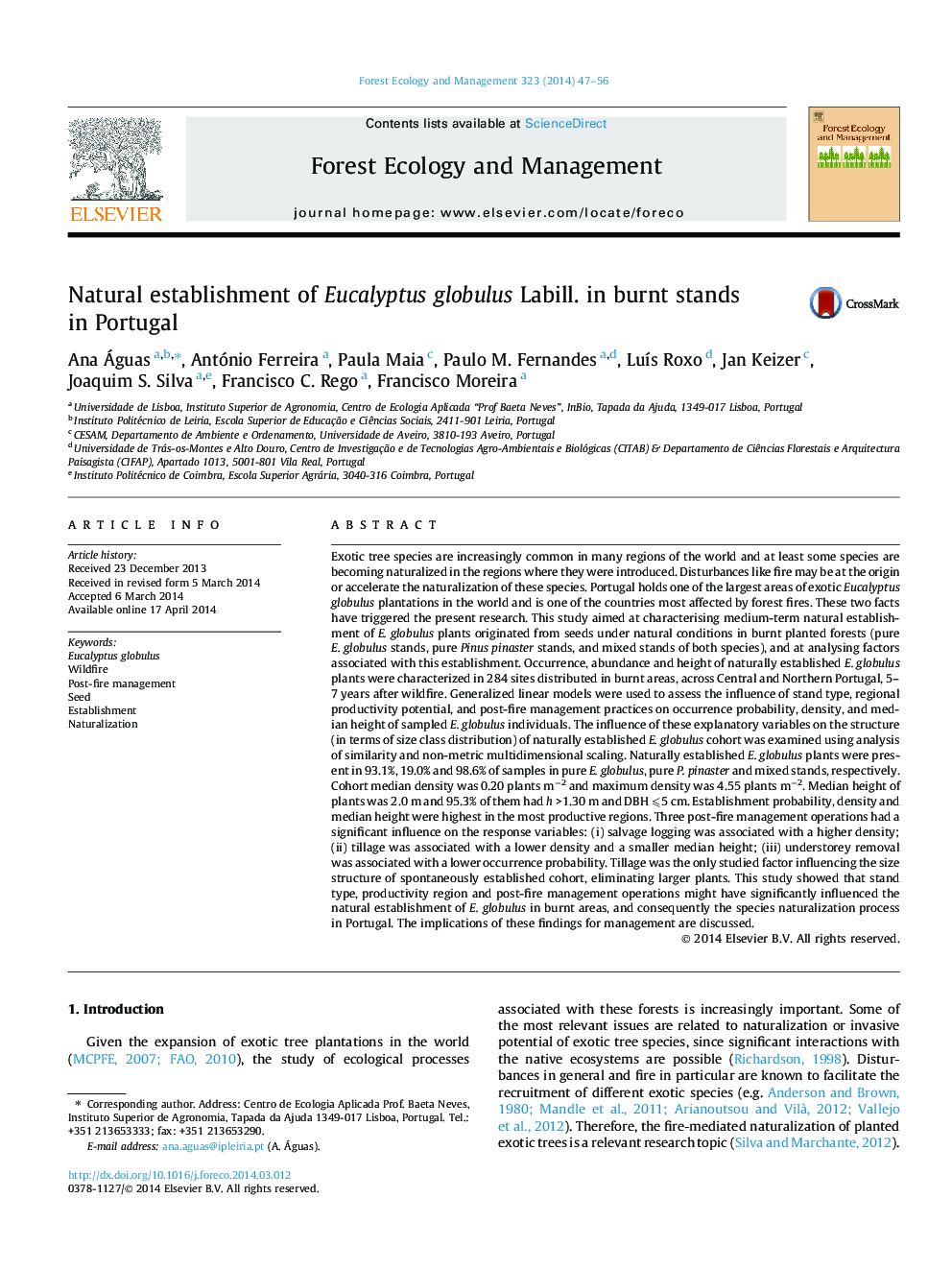| کد مقاله | کد نشریه | سال انتشار | مقاله انگلیسی | نسخه تمام متن |
|---|---|---|---|---|
| 86684 | 159206 | 2014 | 10 صفحه PDF | دانلود رایگان |
• Post-fire natural establishment of E. globulus occurred in 72% of the studied sites.
• Occurrence was influenced by stand type, productivity region and understorey removal.
• Occurrence, density and height were higher in good productivity regions.
• Salvage logging had a positive effect on density.
• Tillage had a negative effect on both density and height.
Exotic tree species are increasingly common in many regions of the world and at least some species are becoming naturalized in the regions where they were introduced. Disturbances like fire may be at the origin or accelerate the naturalization of these species. Portugal holds one of the largest areas of exotic Eucalyptus globulus plantations in the world and is one of the countries most affected by forest fires. These two facts have triggered the present research. This study aimed at characterising medium-term natural establishment of E. globulus plants originated from seeds under natural conditions in burnt planted forests (pure E. globulus stands, pure Pinus pinaster stands, and mixed stands of both species), and at analysing factors associated with this establishment. Occurrence, abundance and height of naturally established E. globulus plants were characterized in 284 sites distributed in burnt areas, across Central and Northern Portugal, 5–7 years after wildfire. Generalized linear models were used to assess the influence of stand type, regional productivity potential, and post-fire management practices on occurrence probability, density, and median height of sampled E. globulus individuals. The influence of these explanatory variables on the structure (in terms of size class distribution) of naturally established E. globulus cohort was examined using analysis of similarity and non-metric multidimensional scaling. Naturally established E. globulus plants were present in 93.1%, 19.0% and 98.6% of samples in pure E. globulus, pure P. pinaster and mixed stands, respectively. Cohort median density was 0.20 plants m−2 and maximum density was 4.55 plants m−2. Median height of plants was 2.0 m and 95.3% of them had h >1.30 m and DBH ⩽5 cm. Establishment probability, density and median height were highest in the most productive regions. Three post-fire management operations had a significant influence on the response variables: (i) salvage logging was associated with a higher density; (ii) tillage was associated with a lower density and a smaller median height; (iii) understorey removal was associated with a lower occurrence probability. Tillage was the only studied factor influencing the size structure of spontaneously established cohort, eliminating larger plants. This study showed that stand type, productivity region and post-fire management operations might have significantly influenced the natural establishment of E. globulus in burnt areas, and consequently the species naturalization process in Portugal. The implications of these findings for management are discussed.
Journal: Forest Ecology and Management - Volume 323, 1 July 2014, Pages 47–56
